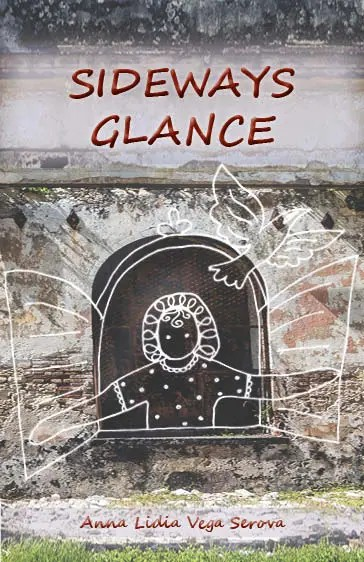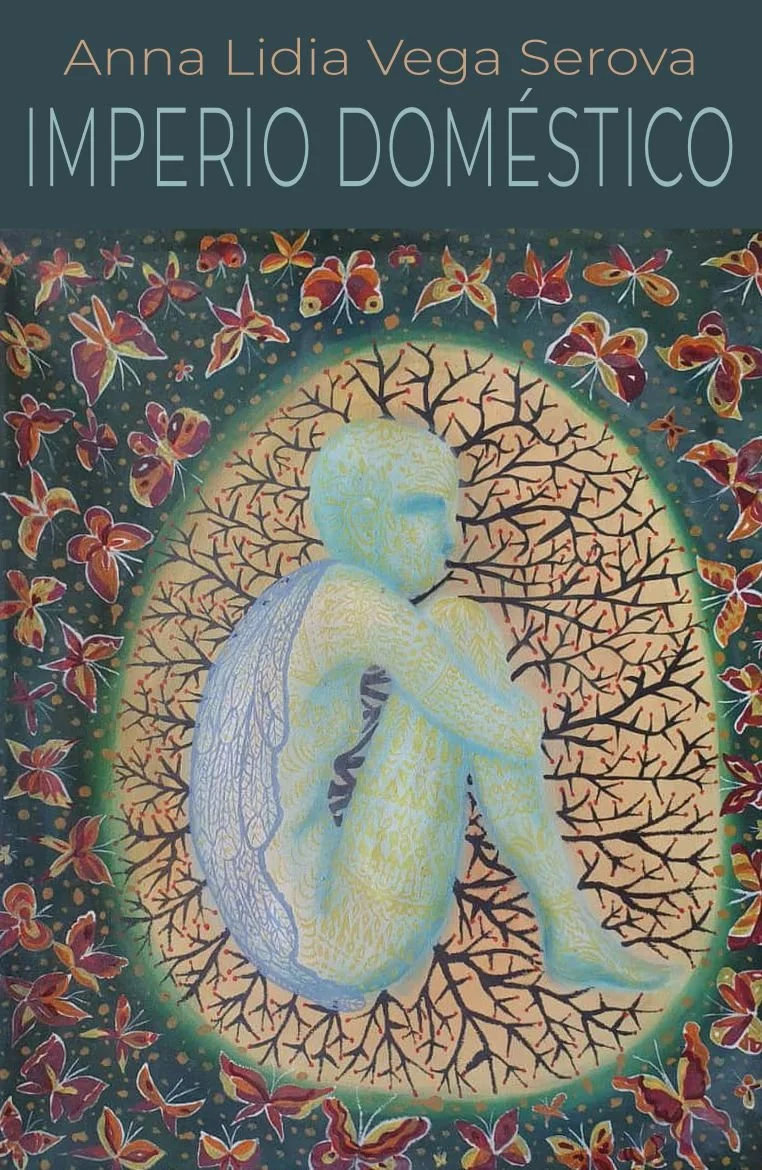Between Page and Image: Anna Lidia Vega Serova
In June, Amaurea published an English translation of Anna Lidia Vega Serova’s Anima Fatua. This September we are following that up with a new Spanish-language edition of her short story collection, Imperio doméstico. In this post, we look at Anna Lidia’s life and work. (Author photo © Gonzalo Vidal)
From the start, Anna Lidia’s path has been one of defiance and reinvention. Born in Leningrad in 1968, to a Russian-Ukrainian mother and Cuban father, she arrived in Havana in 1989. There she came to be seen as one of the most distinctive voices in Cuban literature. In 1997 she won Cuba’s prestigious Premio David for her first collection of short stories, Bad Painting, a title that announced her taste for irony, play and provocation – as well as her own distinctively naïve painting style. Not only is she an accomplished writer, but also a painter and translator. An artist whose work bridges continents, cultures and genres.
A literature of fragments and survival
Anna Lidia’s fiction often grows out of fracture – cultural, personal, historical. Anima Fatua, her novel recently translated into English by Robin Munby and published by Amaurea Press, follows Alia, a girl growing up and discovering her own womanhood in the midst of the chaos of the Soviet Union’s collapse. Although fictional, it very much draws upon Anna Lidia’s own experience of coming of age in the Soviet Union at this time. Herself the product of a transcultural relationship, and attempting to navigate the difficulties and complexities of identity – ethnic and sexual. From infantile rebellion and obsession, through the lived-out fantasies of Russia’s 1980s hippy scene flourishing yet penniless as perestroika follows its course, to ultimately turning her back on the frustrations and violence she has somehow survived to seek her future on the other side of the world. This is a story that succeeds in being both lyrical and brutal, moving from fairytale to nightmare in a single breath. First published in Cuba in 2007, it has now won an English PEN Translates award (2025), and has been submitted for the International Booker Prize 2026.

“Her writing is seductive. Sometimes it provokes tenderness and sometimes pain. A novel of harsh beauty, it gets under your skin.”

But this is only one facet of her work. In Sideways Glance (Amaurea 2021), translated into English from the original Mirada de reojo, she gathers tiny shards of daily life – objects, memories, vignettes – and turns them into literature as evocative as her paintings.
“The evocative power of objects arouses in this book… the autobiographical associations of a writer who explodes the conventions of the short story.”
In Un jardín en miniatura (A Miniature Garden) (Amaurea 2021), she pairs her poetry (translated into English by Amaurea’s own Jonathan Curry-Machado) with photographs by Gonzalo Vidal. These are meditations on identity, love and decay, set against Havana’s crumbling beauty.

 >
>
And this September (2025), Amaurea is bringing out a new Spanish-language edition of Imperio doméstico, one of her most acclaimed short story collections. Next year, in September 2026, we will follow this up with the first English translation of her personal anthological collection, Estirpe de papel, drawn from across her impressive body of writing. Translated by Jennifer Shyue, this will offer anglophone readers a panoramic view of her short fiction at its finest.
Words, Images, Crossings
Anna Lidia has never limited herself to the page. Trained as a painter in Belarus before moving to Cuba, she has exhibited her work internationally – from Havana to Bordeaux, from Barranquilla to Soligorsk. Her canvasses and her texts seem to emerge from the same source: a restless imagination that transforms pain into colour, irony into survival, and memory into story.
“Vega Serova’s fiction reads like a gallery of antiheroines.”
At Amaurea, this has inspired us to explore ways of presenting her work beyond print. Most recently, we have created an AI animation of a scene taken from Anima Fatua. Rather than a trailer for the book, this is an experiment in adaptation: a way of carrying Anna Lidia’s vision into new media, where image, movement and voice can resonate with audiences who might never first meet her through the printed page. And hopefully bring some of them, through the visual media to her writing. Over the coming year, we will be adapting other stories by Anna Lidia into film, as well as looking for other ways in which we can bring her unique voice to the world.
Why Anna Lidia, Why Now
What makes Anna Lidia Vega Serova so compelling is not just the range of her work, but the urgency of it. She writes of hybrid identities, of women who refuse to be reduced to victims, of lives lived at the edge of crisis and creativity. Her characters – and often her narrators – stand at thresholds: between Havana and Leningrad, between joy and sorrow, between the everyday and the surreal.
For us at Amaurea, publishing Anna Lidia is more than a literary project. It is an act of cultural crossing – bringing her singular voice into English, renewing her presence in Spanish, and now experimenting with new forms that echo her own play between text and image.
With each book, and now with each experiment in film and animation, we hope to draw more readers into her orbit. Because Anna Lidia’s work matters – not only in Cuba, but everywhere that literature dares to tell the truth about fractured lives and fragile dreams.

